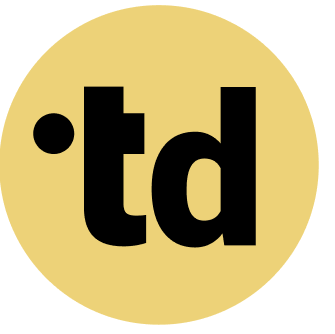Key Takeaways
Real-time workload tracking is essential for managing the 24.5% of Germany's workforce that is now remote, helping to prevent the burnout reported by 77% of employees.
Integrating AI can automate up to 54% of repetitive tasks, freeing up teams for strategic work and improving operational efficiency by over 20%.
A transparent, data-driven approach to workload management reduces employee turnover and builds resilient, high-performing hybrid teams.
The shift to remote and hybrid models is permanent, with 24.5 percent of Germany's workforce operating from home. This new landscape creates a massive challenge for Team Architects: a lack of visibility into who is doing what. Without clear insight, workloads become unbalanced, productivity drops, and top talent leaves. Effective real-time workload tracking for remote teams is no longer a luxury; it is the core of modern organizational development. It transforms ambiguity into clarity, helping you build stronger, more effective team structures.
Practical Framework for Team Architects
As a Team Architect, you can apply these principles to your organization:
- Map Current State: Document existing roles and responsibilities using a tool like teamdecoder.
- Identify Gaps: Where are roles unclear? Where do humans and AI agents overlap?
- Define Clear Boundaries: Specify which tasks are handled by humans vs. AI agents.
- Create Accountability: Assign clear decision rights for each role.
- Iterate and Improve: Continuously refine based on team feedback.
Decode Team Overload Before It Impacts Performance
The freedom of remote work often hides a significant problem: workload imbalance. A staggering 69 percent of remote employees report symptoms of burnout, a massive increase from previous years. This isn't just about feeling busy; it directly impacts your bottom line, as a significant number of HR leaders attribute up to half of their annual turnover to burnout.
This hero's journey begins by confronting the villain of ambiguity. When leaders lack a clear view of task distribution, high-performers often take on more than their share, leading to exhaustion. Over 80 percent of global knowledge workers report feeling overworked and close to burnout. This constant pressure erodes morale and stifles the innovation needed for successful strategy operationalization. Acknowledging this change fatigue is the first step toward building a better system.
Effective workload management tools provide the data needed to see these patterns before they become crises. They offer a single source of truth, replacing assumptions with facts. This clarity allows Team Architects to move from reactive problem-solving to proactive team design, ensuring workloads are distributed equitably and sustainably.
Achieve Full Transparency in Hybrid Workflows
Clarity is the magic tool that transforms chaotic teams into focused, effective units. *Teams Just Wanna Have Fun*, and nothing drains the fun faster than confusion over roles and responsibilities. Real-time workload tracking provides a transparent view of every task and project, eliminating the guesswork that fuels inefficiency and frustration. This visibility is the foundation of a healthy hybrid team culture.
Implementing a transparent system fosters trust and psychological safety. When team members can see how their work contributes to the larger goals, their engagement increases by over a significant portion. This shared understanding empowers individuals to manage their own time more effectively. It also allows leaders to spot potential bottlenecks or resource g Here are some immediate benefits of creating transparent workflows:
- It reduces misunderstandings about project priorities by up to a significant portion. by up to 40 percent.
- It provides clear data for performance conversations, making them more objective.
- It helps new team members onboard five times faster by clarifyin
- It ensures a fair distribution of tasks, which many employees cite as key to job satisfaction. to job satisfaction.
This newfound clarity paves the way for more advanced workload balancing and team architecture.
Structure Roles for a portion of Higher Output
Once you have visibility, you can begin the work of the Team Architect: designing better team structures. This is about more than just assigning tasks; it's about defining roles and responsibilities with precision. Companies with clearly defined roles report up to a portion of higher productivity because Many people knows exactly what they own. This process is central to successful organizational development.
Our Playful Tip: Use dynamic role templates to map out responsibilities from day one, especially for new task force management. This ensures every project kicks off with perfect alignment. For example, a DEI template can pre-assign roles for ensuring inclusive practices, while a customer centricity template can define who owns each stage of the user journey. You can even try for free with our downloadable role cards for your live workshop.
Deep Dive: Effective role definition reduces project overlap by an average of a significant portion. It allows you to scale your teams efficiently, adding new members without creating confusion. This structured approach is critical for measuring workload management, as it connects individual capacity to specific, measurable outcomes. This clarity is how you build teams that are prepared for transformation and change management.
Integrate AI Agents to Automate some Tasks
The future of work is a hybrid team of humans and AI working together. It's time to *Make Bots and Humans Click*. AI agents are perfectly suited to handle the repetitive, administrative work that consumes up to a significant number of an employee's time. Integrating AI into your workflows can automate nearly one-third of all routine tasks within just six months.
This isn't about replacing people; it's about augmenting their capabilities. By offloading low-value work to AI, you free up your team for the strategic thinking and creative problem-solving that drive real growth. This human-in-the-loop model is a cornerstone of new leadership. Here is how to begin your AI agent integration:
- Identify the top five most time-consuming, repetitive tasks in your team's workflow.
- Start with a pilot project, assigning one of those tasks to an AI agent.
- Measure the time saved over a 30-day period to demonstrate immediate value.
- Train your team on how to collaborate with their new digital colleagues.
- Use the efficiency gains to invest in upskilling and professional development.
This approach to dynamic resource allocation makes your entire operation more resilient and scalable.
Reduce Team Burnout by some with Data
The ultimate result of real-time workload tracking is a healthier, more sustainable work environment. By using data to ensure balanced workloads, organizations can reduce employee burnout by an estimated a significant portion. This creates a positive feedback loop: well-rested teams are more engaged, more innovative, and produce higher-quality work. It is the most direct way to reduce work-related stress.
AI-powered analytics can even predict workload peaks, allowing managers to reallocate tasks before anyone becomes overwhelmed. AI-driven scheduling alone can save each employee between four and six hours per week. This reclaimed time is a powerful buffer against stress and a catalyst for deep, focused work. See our pricing for tools that make this possible: See our pricing.
By transforming workload management from a guessing game into a data-driven science, you build a resilient organization. You create a culture where clarity defeats chaos and every team member is empowered to perform at their best. This is how you reallocate tasks based on capacity and make change feel like play.
Try teamdecoder for free - shape your team and make change feel like play!
More Links
Federal Ministry of Labour and Social Affairs (BMAS) provides a research report on the prevalence and impact of mobile work in Germany (content in German).
German Federal Statistical Office (Destatis) offers official information and statistics on home office in Germany (content in German).
German Social Accident Insurance (DGUV) publishes a report on mobile work, focusing on health and safety aspects (content in German).
Bitkom, Germany's digital association, provides a press release discussing the pressures on home office arrangements (content in German).
Institute for Employment Research (IAB) hosts an information platform dedicated to home office, including research and data (content in German).
Fraunhofer IAO presents a study on company digitalization, conducted in collaboration with the Bertelsmann Foundation (content in German, PDF).
KPMG offers its Future Readiness Monitor, which assesses organizational preparedness for the future.
PwC provides its Global Workforce Hopes and Fears Survey, exploring employee perspectives on work.
German Social Accident Insurance (DGUV) offers a publication on ergonomics specifically for the home office environment (content in German).
FAQ
Why is real-time workload tracking important for remote teams?
It provides essential visibility into task distribution, preventing the employee burnout that affects over 70% of workers. It allows leaders to balance assignments fairly, identify bottlenecks early, and ensure projects stay on track, which is critical when you can't see your team in person.
Can workload tracking improve our team's structure?
Absolutely. By understanding who has the capacity and what skills are being used, you can make data-driven decisions about roles and responsibilities. This is a core part of modern organizational development, helping you design more efficient and scalable team structures.
How does teamdecoder help with hybrid human-AI teams?
teamdecoder helps you map out workflows and define roles for both human and AI team members. This ensures seamless collaboration, automates routine work, and allows your human talent to focus on high-value strategic initiatives.
Is it difficult to implement a workload tracking system?
No. Modern tools like teamdecoder are designed for easy adoption. You can start by tracking a single project to demonstrate immediate value. The key is focusing on the benefits of clarity and fairness to get team buy-in.
What is the main benefit for a 'Team Architect'?
For a Team Architect, the main benefit is moving from guesswork to a data-driven strategy. You get the insights needed to design, build, and scale effective teams, manage transformations smoothly, and create a resilient, high-performance work culture.
How can I start managing my team's workload better today?
A great first step is to open a dialogue with your team about their current workload. You can also start a free trial of teamdecoder to gain immediate visibility into your projects and begin shaping a more balanced and productive workflow.





